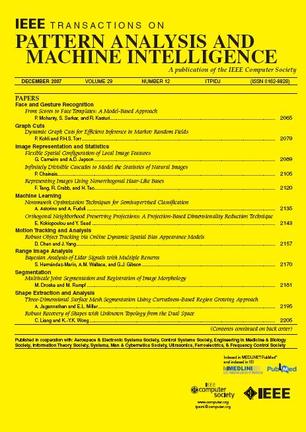Adversarial Metric Attack and Defense for Person Re-Identification.
IF 18.6
1区 计算机科学
Q1 COMPUTER SCIENCE, ARTIFICIAL INTELLIGENCE
IEEE Transactions on Pattern Analysis and Machine Intelligence
Pub Date : 2021-06-01
Epub Date: 2021-05-11
DOI:10.1109/TPAMI.2020.3031625
引用次数: 32
Abstract
Person re-identification (re-ID) has attracted much attention recently due to its great importance in video surveillance. In general, distance metrics used to identify two person images are expected to be robust under various appearance changes. However, our work observes the extreme vulnerability of existing distance metrics to adversarial examples, generated by simply adding human-imperceptible perturbations to person images. Hence, the security danger is dramatically increased when deploying commercial re-ID systems in video surveillance. Although adversarial examples have been extensively applied for classification analysis, it is rarely studied in metric analysis like person re-identification. The most likely reason is the natural gap between the training and testing of re-ID networks, that is, the predictions of a re-ID network cannot be directly used during testing without an effective metric. In this work, we bridge the gap by proposing Adversarial Metric Attack, a parallel methodology to adversarial classification attacks. Comprehensive experiments clearly reveal the adversarial effects in re-ID systems. Meanwhile, we also present an early attempt of training a metric-preserving network, thereby defending the metric against adversarial attacks. At last, by benchmarking various adversarial settings, we expect that our work can facilitate the development of adversarial attack and defense in metric-based applications.针对人员再识别的对抗性度量攻击与防御。
人员再识别(re-ID)由于在视频监控中的重要作用,近年来备受关注。通常,用于识别两个人图像的距离度量在各种外观变化下都具有鲁棒性。然而,我们的工作观察到,通过简单地向人物图像添加人类难以察觉的扰动,现有距离度量对对抗性示例的极端脆弱性。因此,在视频监控中部署商用再识别系统时,安全隐患大大增加。虽然对抗样例在分类分析中得到了广泛的应用,但在人像再识别等度量分析中却很少被研究。最可能的原因是re-ID网络的训练和测试之间的自然差距,即,如果没有有效的度量,re-ID网络的预测不能在测试期间直接使用。在这项工作中,我们通过提出对抗性度量攻击来弥补差距,这是一种与对抗性分类攻击并行的方法。综合实验清楚地揭示了再识别系统中的对抗效应。同时,我们也提出了一个训练度量保持网络的早期尝试,从而保护度量免受对抗性攻击。最后,通过对各种对抗性设置进行基准测试,我们期望我们的工作可以促进基于度量的应用中对抗性攻击和防御的发展。
本文章由计算机程序翻译,如有差异,请以英文原文为准。
求助全文
约1分钟内获得全文
求助全文
来源期刊
CiteScore
28.40
自引率
3.00%
发文量
885
审稿时长
8.5 months
期刊介绍:
The IEEE Transactions on Pattern Analysis and Machine Intelligence publishes articles on all traditional areas of computer vision and image understanding, all traditional areas of pattern analysis and recognition, and selected areas of machine intelligence, with a particular emphasis on machine learning for pattern analysis. Areas such as techniques for visual search, document and handwriting analysis, medical image analysis, video and image sequence analysis, content-based retrieval of image and video, face and gesture recognition and relevant specialized hardware and/or software architectures are also covered.

 求助内容:
求助内容: 应助结果提醒方式:
应助结果提醒方式:


